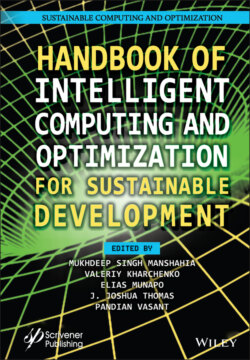Читать книгу Handbook of Intelligent Computing and Optimization for Sustainable Development - Группа авторов - Страница 53
2.5.1.1 Catalytic Activity of Deoxyribozyme
ОглавлениеOne of the reactions that deozyribozyme catalyzes is to break the phosphodiester bond which cleaves the DNA or RNA strands. This reaction is commonly performed in the domain of DNA computing. In particular, the enzyme can be phosphodiesterase. By structural modification of this enzyme, the catalytic activity can be altered. For example, if a specific bonding domain is added to deoxyribozyme, then it can specifically bind to a particular complementary nucleic acid strand. These kinds of ligand nucleic acid strands strongly influence the catalytic activity of deoxyribozyme. The catalytic function of the enzyme can be either increased or inhibited by the association of the ligand strands. If the deoxyribozyme actively catalyzes the reactions, then it can cleave oligonucleotide in two shorter products which is shown in Figure 2.12. This reaction is used in the design of DNA logic gate. The generated shorter nucleic acid strands are the output signal of the gate. These signals can further be used as the input of another downstream gate and so on. Thus, using the gate structures and cleaving reactions a large DNA logic circuit can eventually be formed. The output signals of the larger circuit are also represented by short single stranded DNA strands which are tagged with fluorophore to read the signal.
The mechanism of cleaving nucleic acid strand is shown in Figure 2.12 which is used to perform simple computations and logic operations. In the figure, the substrate strand, i.e., the strand which has to be cleaved is tagged by fluorophore at one end and quencher molecule at the other end. Quenching process decreases the fluorescence intensity of certain molecule. In the process of fluorophore quenching, first the fluorophore enters into excited state by absorbing light [7].
Figure 2.12 Catalytic activity of deoxyribozyme.
(2.19)
If quencher is absent, then the fluorophore again returns to the ground state by the emission of light which causes the fluorescence.
(2.20)
In presence of quencher, the excited fluorophore nonradiatively, i.e., without emitting light, transfers its energy to the quencher. This causes the quencher to enter into excited state, on the other hand, the fluorophore returns to its ground state.
(2.21)
In the next step, the quencher returns to its ground state by releasing the absorbed energy. The release of energy can occur through emissive decay which causes fluorescence; or by dark quenching in which the energy releases non-radiatively, i.e., through molecular vibrations (heat).
(2.22)
The fluorescence intensity increases proportionally as the distance between fluorophore and quencher increases.
In Figure 2.12, if substrate is cleaved, then the two short strands go apart which allow the fluorescence of the output signal. Otherwise, the fluorescence is suppressed by the quencher.
